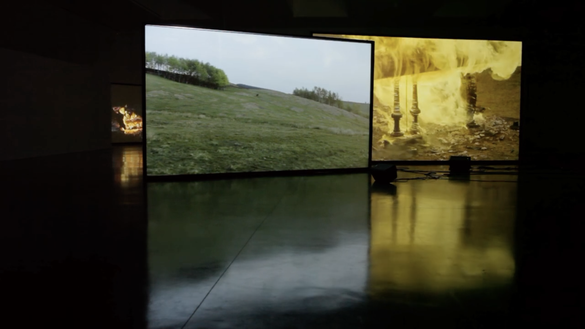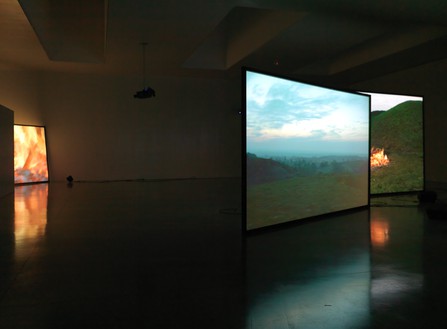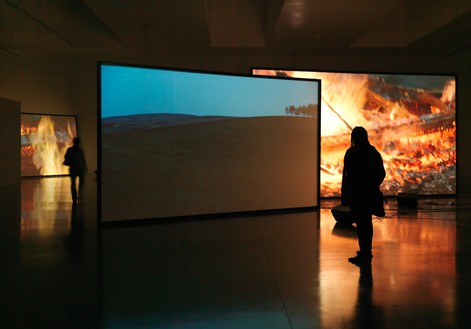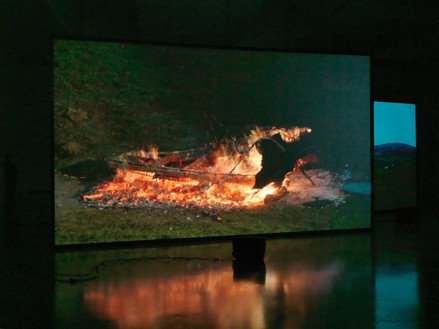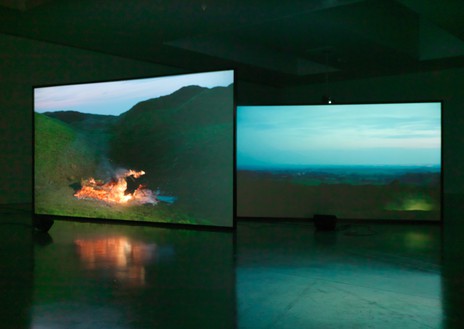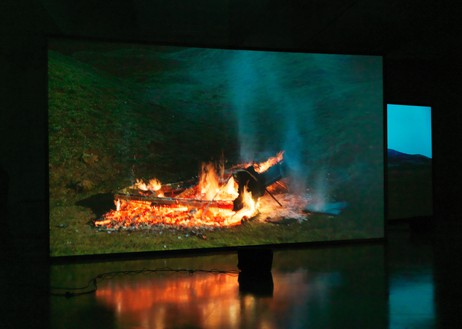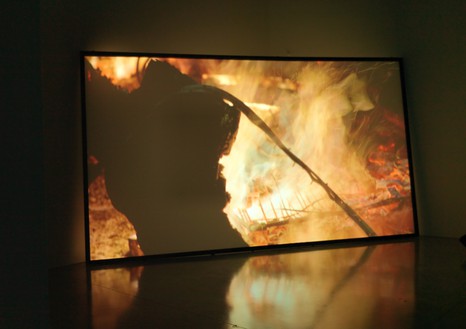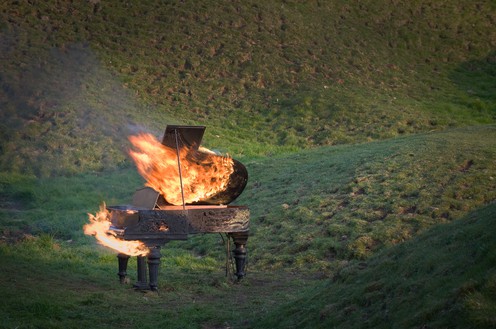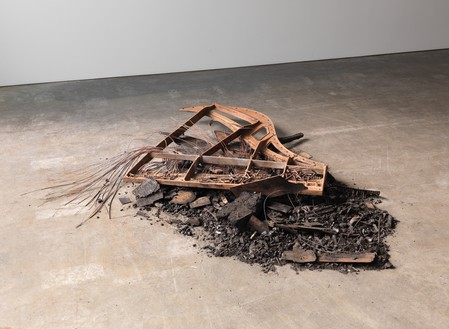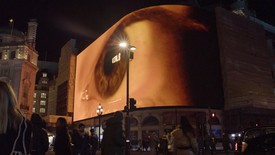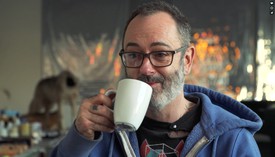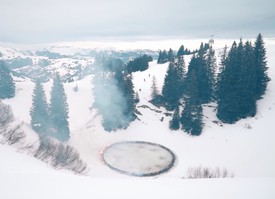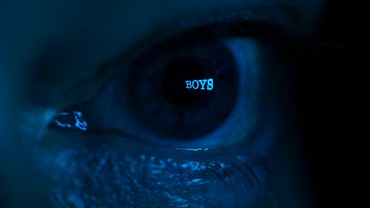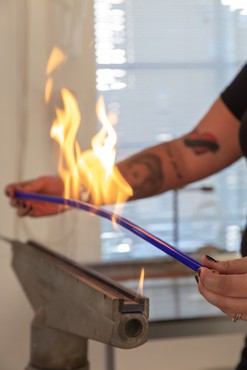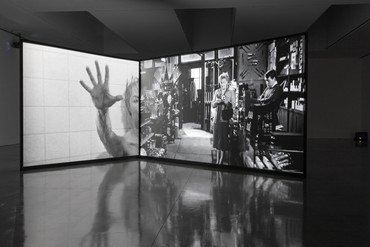About
I wanted to do something with a piano in a landscape of some significance and I suppose, as a Scotsman, there’s nothing more significant than the border. I thought it was beautiful to look from one country into another and I liked the idea that Hadrian’s Wall is, under a certain interpretation, a great end of civilization. . . . I was overwhelmed to be in a landscape of such beauty, and with such a huge unfathomable history.
—Douglas Gordon
Gagosian is pleased to present The End of Civilisation, a major film installation by Douglas Gordon.
Gordon is a conjurer of collective memory and perceptual surprise whose tools include the commodities and mechanisms of everyday life. Into a diverse body of work—which spans narrative video and film, sound, photographic objects, and texts both as site-specific installation and printed media—he infuses a combination of humor and trepidation to recalibrate reactions to the familiar. An early work, 24 Hour Psycho (1993), slowed down Alfred Hitchcock’s legendary film into a full day’s duration, attenuating the horror until any sensation of suspense ceased to exist. In 2006, Gordon collaborated with Philippe Parreno on the general-release feature film Zidane: A 21st Century Portrait, in which multiple cameras tracked every action and emotion of the soccer star during an important game.
In The End of Civilisation, a grand piano burns at a remote site deep in the Cumbrian landscape. This lushly green and desolate locale overlooking the boundary between England and Scotland was once the border of the Roman Empire. The grand piano, emblematic of high culture as both a finely crafted instrument and a beautiful sculptural object, is destroyed at the primeval edge of civilization. With this symbolic conflagration, Gordon re-enacts an ancient local tradition of igniting beacons as an admonition or communication. Inspired in part by the journey of the 2012 Olympic torch across the British Isles, The End of Civilisation is both a celebration and a warning—of fire as a symbol of optimism and hope, but also of risk, danger, and destruction.
The film is shown on multiple screens and with layered sound. One screen is devoted to a close recording of the burning piano, from when it is first set alight to when it has been reduced to ashes. Another presents a panning shot of the tranquil surrounding landscape—occasionally, licks of flame or wisps of smoke invade the periphery of the screen, the only indication that the seemingly serene landscape is in close proximity to a raging fire. The End of Civilisation was first screened on July 5, 2012, at the Tyne Theater, on the site of Hadrian’s Wall in Newcastle City Center as part of the London 2012 Cultural Olympiad. Commissioned by Great North Run Culture and Locus+, the film was funded by Arts Council England. It is part of the London 2012 Festival.
Share
Artist
Download
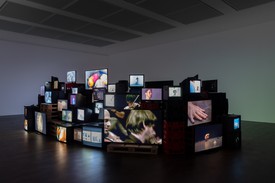
Douglas Gordon: To Sing
On the occasion of Douglas Gordon: All I need is a little bit of everything, an exhibition in London, curator Adam Szymczyk recounts his experiences with Gordon’s work across nearly three decades, noting the continuities and evolutions.
Douglas Gordon: if when why what
Douglas Gordon took over the Piccadilly Lights advertising screen in London’s Piccadilly Circus, as well as a global network of screens in cities including Berlin, Melbourne, Milan, New York, and Seoul, nightly for three minutes at 20:22 (8:22pm) throughout December 2022, with his new film, if when why what (2018–22). The project was presented by the Cultural Institute of Radical Contemporary Art (CIRCA) in conjunction with the exhibition Douglas Gordon: Neon Ark at Gagosian, Davies Street, London.
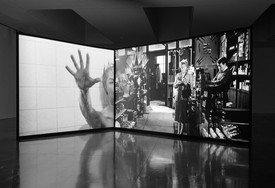
Douglas Gordon
Katrina Brown discusses the importance of Douglas Gordon’s 24 Hour Psycho (1993) and some of the films that followed, touching on threads that run throughout the artist’s career.
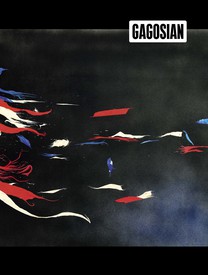
Gagosian Quarterly Spring 2018
The Spring 2018 Gagosian Quarterly with a cover by Ed Ruscha is now available for order.
Douglas Gordon: I had nowhere to go
Featuring an extensive interview with Douglas Gordon on the process of making his 2016 film I had nowhere to go: Portrait of a displaced person, this video, produced by Berlin Art Link, includes clips of Jonas Mekas and revealing anecdotes about the creation of the film.
Douglas Gordon and Morgane Tschiember
Douglas Gordon and Morgane Tschiember’s installation As close as you can for as long as it lasts, presented during Elevation 1049: Avalanche in Gstaad, Switzerland.
